2022 Sony World Photography Awards
In images: Highlighting environment and documentary projects
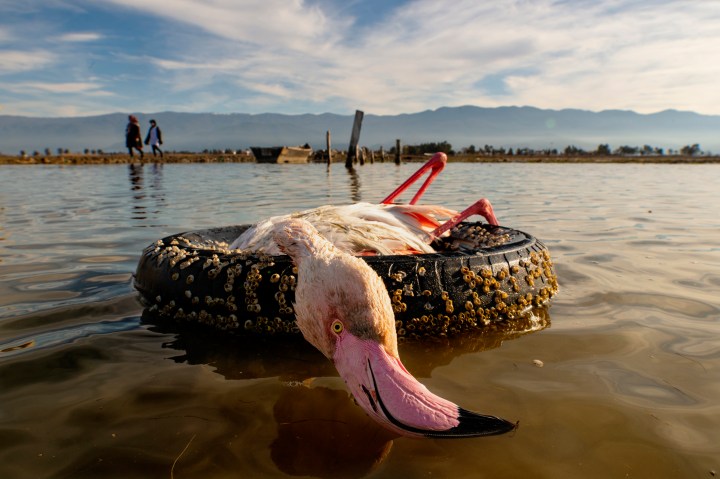
Now in its 15th year, the Sony World Photography Awards returns to celebrate contemporary photography and the ways the arts reflect the world around us. Here is a selection of the images from the winners of this year's national awards in the Environment and Documentary Projects categories.

“Ash Portraits 4.” John Banks at his home in Greenville that was destroyed by the Dixie Fire, California’s largest ever wildfire. John is president of the local Rotary Club and has been active in raising and distributing funds to help the many people who lost their homes in this disaster. October 26/2021. As our global temperatures rise we have seen an unprecedented increase in the extremity of wildfires around the world. © Gideon Mendel, South Africa, Finalist, Professional, Environment, 2022 Sony World Photography Awards
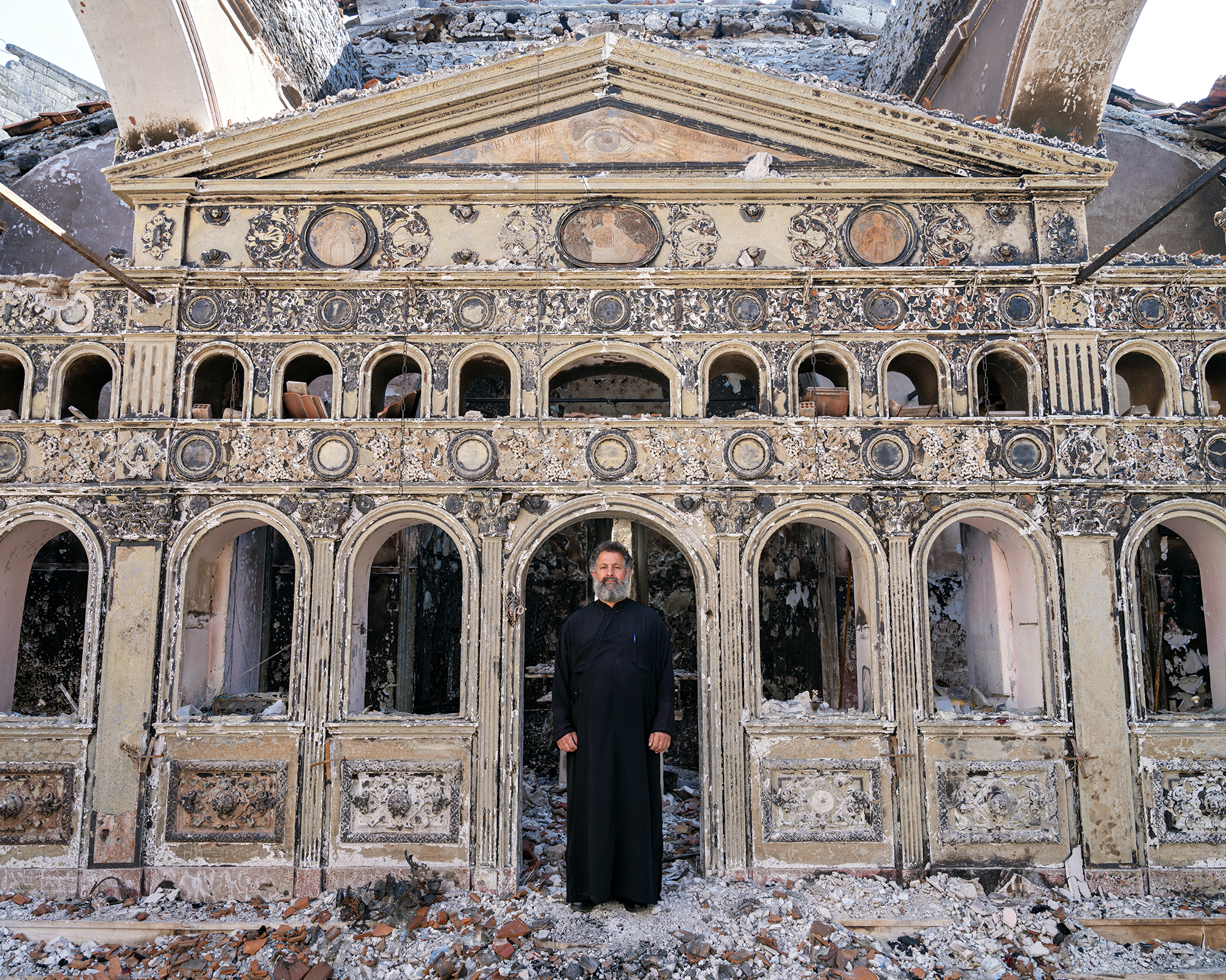
“Ash Portraits 6.” Father Ioannis Siaflekis at the historic 18th century Agion Taxiarchon Church in Kokinomilia Village. This destruction was the result of the massive fires that devastated huge parts of Evia Island after Greece experienced an unprecedented heatwave in the summer of 2021. August 30/2021. © Gideon Mendel, South Africa, Finalist, Professional, Environment, 2022 Sony World Photography Awards

“10”. The few lucky birds that survive will migrate from the lagoon, and may return next year. © Mehdi Mohebi Puor, Iran, Shortlist, Professional, Environment, 2022 Sony World Photography Awards
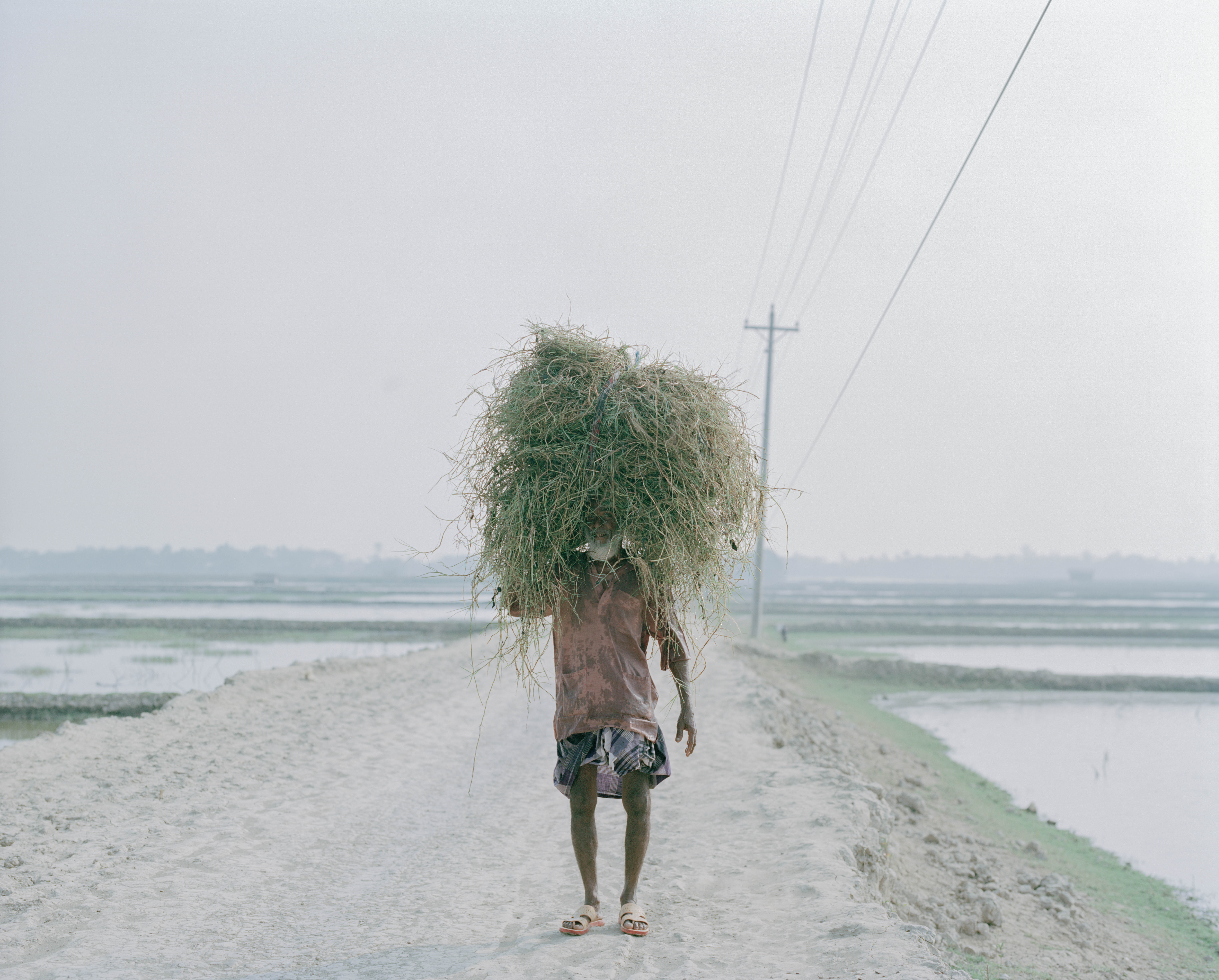
“Living in the Transition pt.2.” A man carries a large quantity of straw on his head. I photographed these pictures in Gabura Union, Bangladesh between the beginning of October and late November 2021. Gabura Union is located on the southwestern coast of Bangladesh. It is one of the most vulnerable areas to the impacts of climate change, and many residents often suffer from its effects. These include river erosion, landslides, rising salinity levels in fresh water sources and collapsing infrastructure, caused by the tropical cyclones that occur frequently. The purpose of this photo essay is to capture and communicate the situation for people living quietly in this transition, impacted by climate change. © Shunta Kimura, Japan, Finalist, Professional, Environment, 2022 Sony World Photography Awards
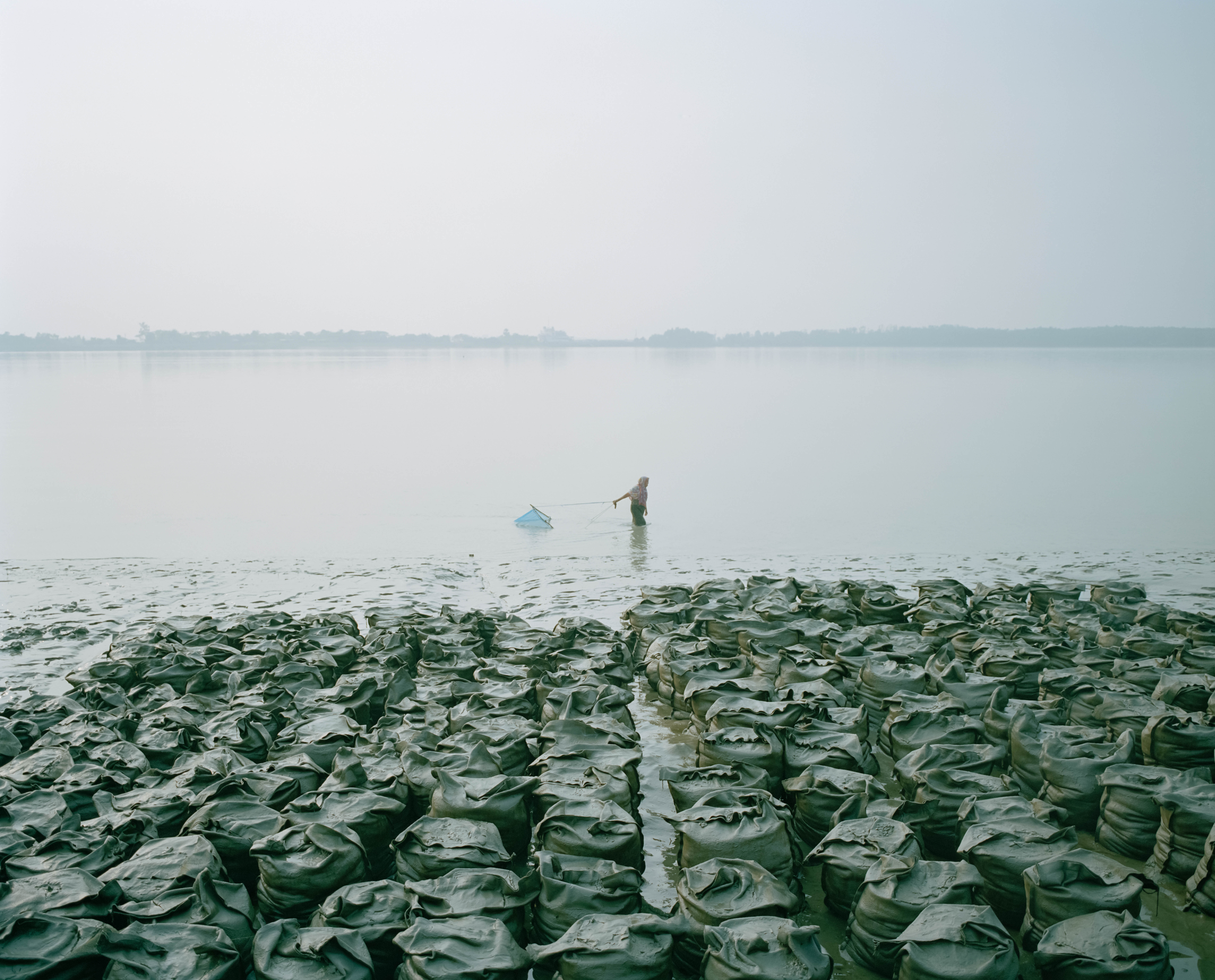
“Living in the Transition pt.6.” A woman walking in the water, and catching small fish or shrimps near sandbags soaked in the river. © Shunta Kimura, Japan, Finalist, Professional, Environment, 2022 Sony World Photography Awards
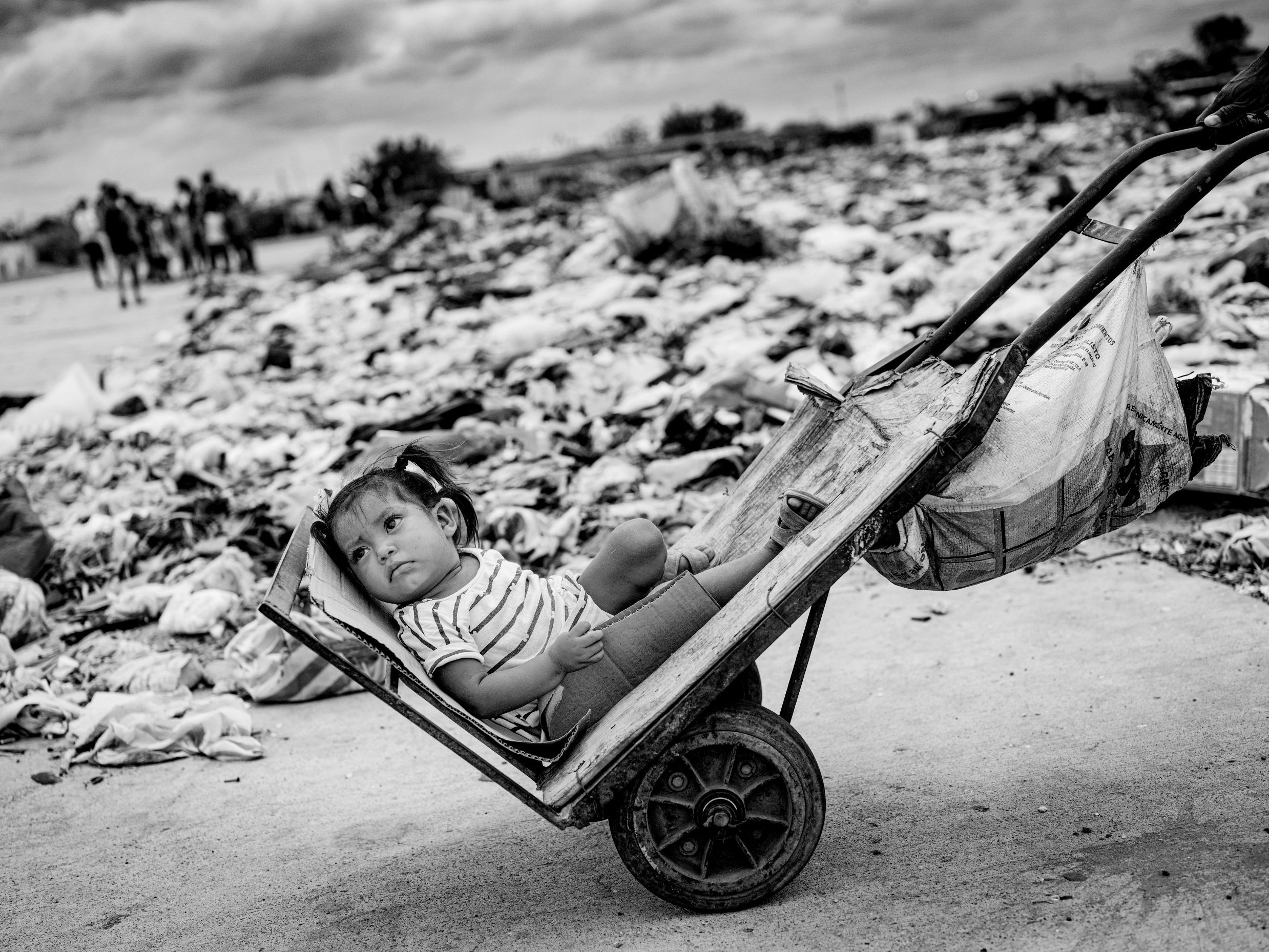
“Venezuelan Migrant, Colombia 6.” A young girl being transported home by her dad along the garbage site, on the abandoned airstrip outside Maicao in Colombia. More than 8.5 million people in Colombia urgently need help. The financial collapse in Venezuela has left many with no access to emergency aid, shelter, clean drinking water or food. Children pay the highest price. © Jan Grarup, Denmark, Finalist, Professional, Documentary Projects, 2022 Sony World Photography Awards
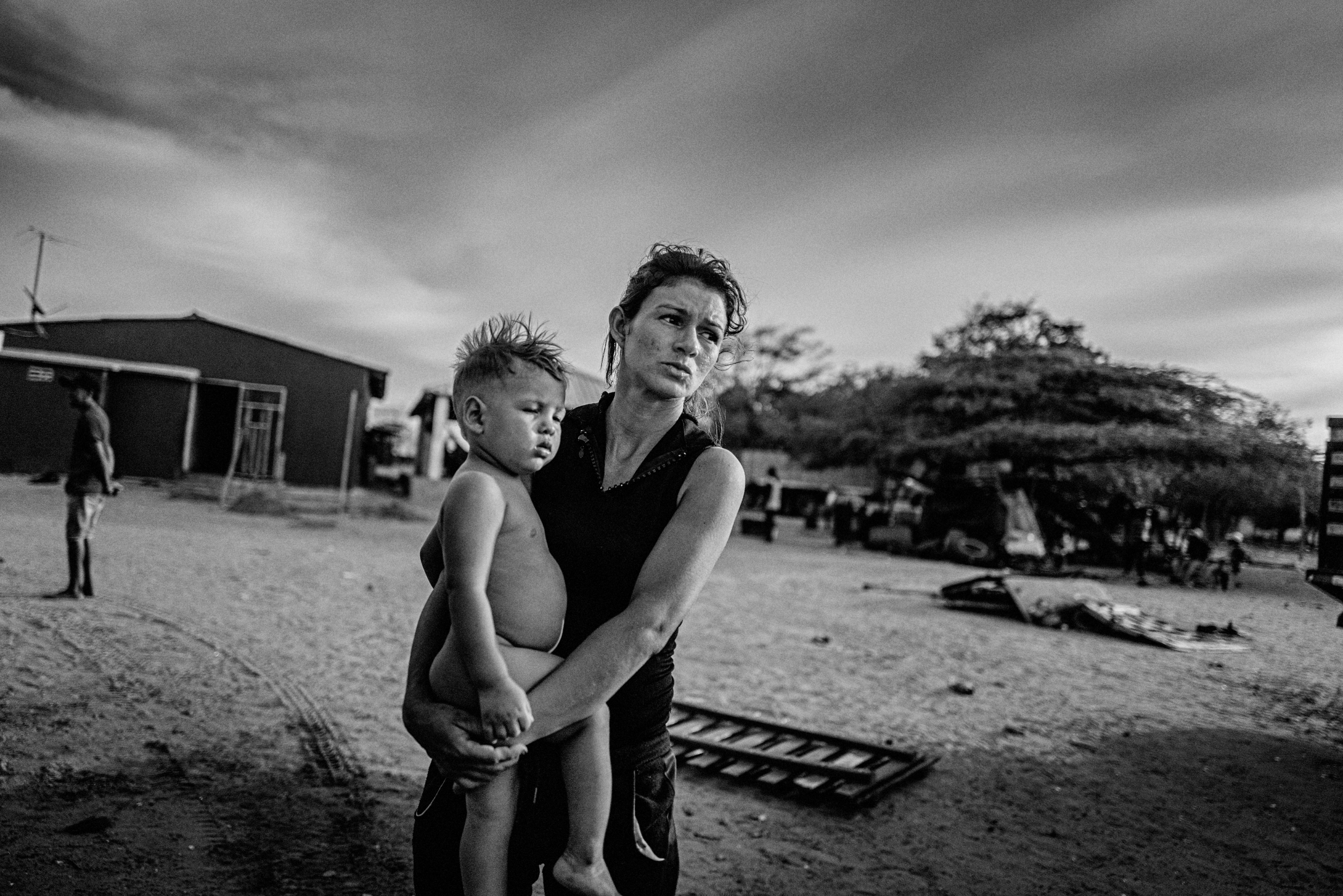
“Venezuelan Migrant, Colombia 7.” A Venezuelan mother and her young child wait for relief aid in the border city between Venezuela and Colombia. New families arrive daily, with the rising cost of living in Venezuela, and lack of jobs. © Jan Grarup, Denmark, Finalist, Professional, Documentary Projects, 2022 Sony World Photography Awards
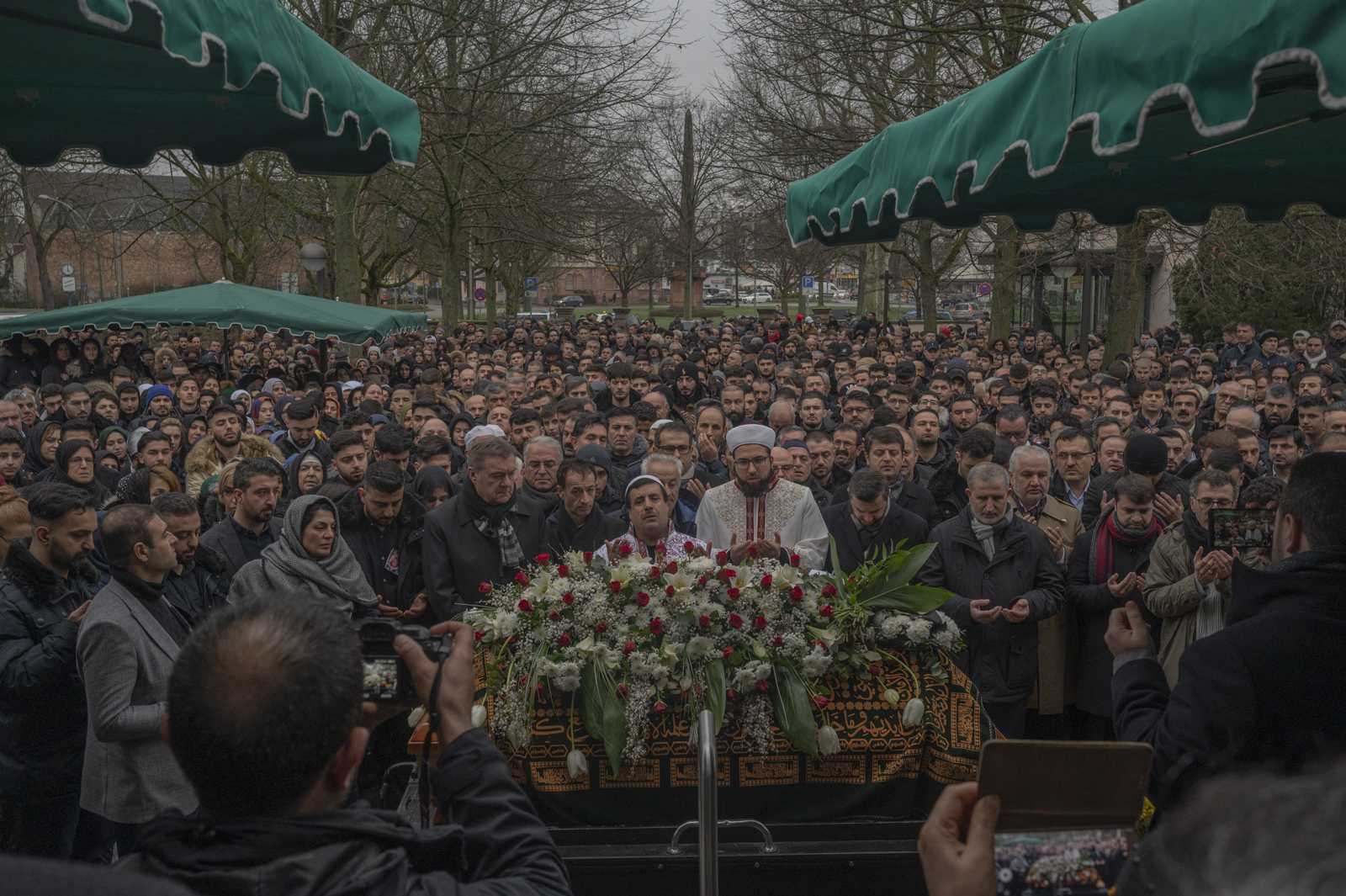
“Funeral of Ferhat Unvar.” The funeral of the murdered Ferhat Unvar at Hanau‘s main cemetery on 24 February 2020 is met with a great response. Ferhat was considered a sociable young man who had many friends in the city. The racist attack of 19 February 2020 in Hanau, Hessen, shook German society. This photo essay accompanies the friends and relatives of those tragically murdered. In the weeks and months following the attack, while an entire city was still reeling from the shock, solidarity groups and initiatives began forming to support the survivors of the attack. Mourning developed into anger and the desire for change. These photographs provide intimate access to the families and friends affected, who have all lost important people in their lives. © Fabian Ritter, Germany, Finalist, Professional, Documentary Projects, 2022 Sony World Photography Awards

“Portrait of Piter Minnemann.” Portrait of Piter Minneman, survivor of the terrorist attack. © Fabian Ritter, Germany, Finalist, Professional, Documentary Projects, 2022 Sony World Photography Awards
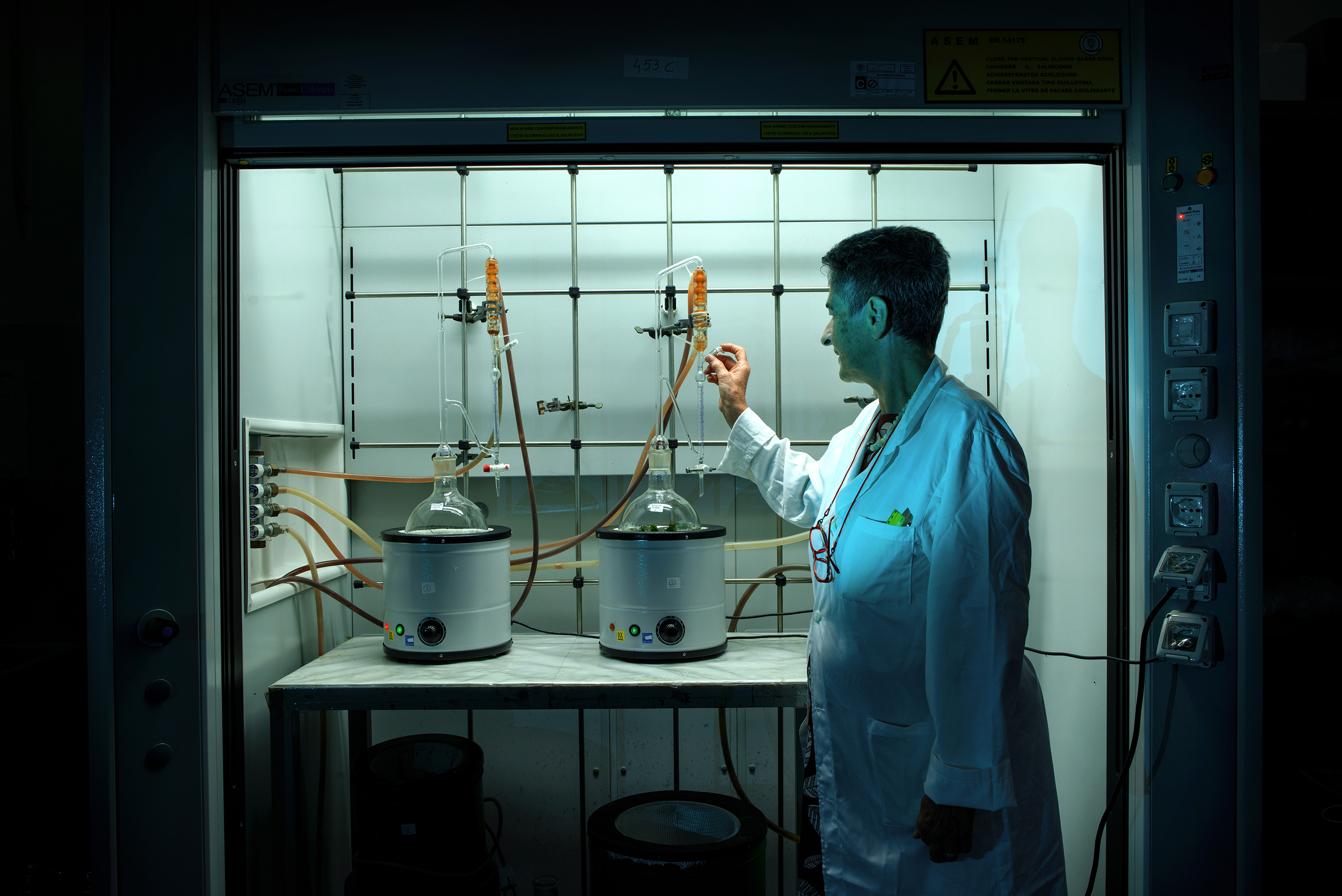
“Nemo’s Garden 9.” Luisa Pistelli, professor of the Pharmaceutical Biology at Pisa University analyzes the phytochemistry of the plants grown inside the biospheres. Through the hydro-distillation of the basil fresh aerials parts using Clevenger equipment is possible to obtain the essential oil that will successively analyze through gas chromatography combined with mass spectroscopy (GC-MS) in order to obtain its chemical composition and study its benefits. According to the Intergovernmental Panel on Climate Change (IPCC), the desertification brought by climate change in recent years has already extensively reduced agricultural productivity in many regions of the world. Agriculture represents 70% of freshwater use around the globe and with the world’s population projected to increase to 10 billion by the end of the century, it has become imperative to find alternative and ecologically sustainable methods of cultivation. Nemo’s Garden – the world’s first underwater greenhouse – offers a possible solution. This completely self-sustainable project explores an alternative farming system that could be implemented in areas where environmental or geo-morphological conditions make the growth of plants almost impossible. The encouraging results of the last few years, where more than 40 different species of plants have been successfully cultivated, gives hope that a sustainable agricultural system has been developed to help tackle the new challenges brought by climate change. © Giacomo d’Orlando, Italy, Finalist, Professional, Environment, 2022 Sony World Photography Awards

“Nemo’s Garden 10.” The Nemo’s Garden seen from the water surface. The biospheres are located 40 meters off the Noli shore, a small village of the Ligurian coast.
This particular distance has been chosen to make the biospheres more accessible for operations which requires human intervention. Their depth instead lies between 6 and 12 meters to enable the plants to draw on the necessary source of light for their development. In the center stands the tree of life. Under its platform the cables used for connecting the electronic devices are separated and distributed to each biosphere. Figuratively it also represent the core of the experiment: the possibility to grow terrestrial plants underwater. © Giacomo d’Orlando, Italy, Finalist, Professional, Environment, 2022 Sony World Photography Awards
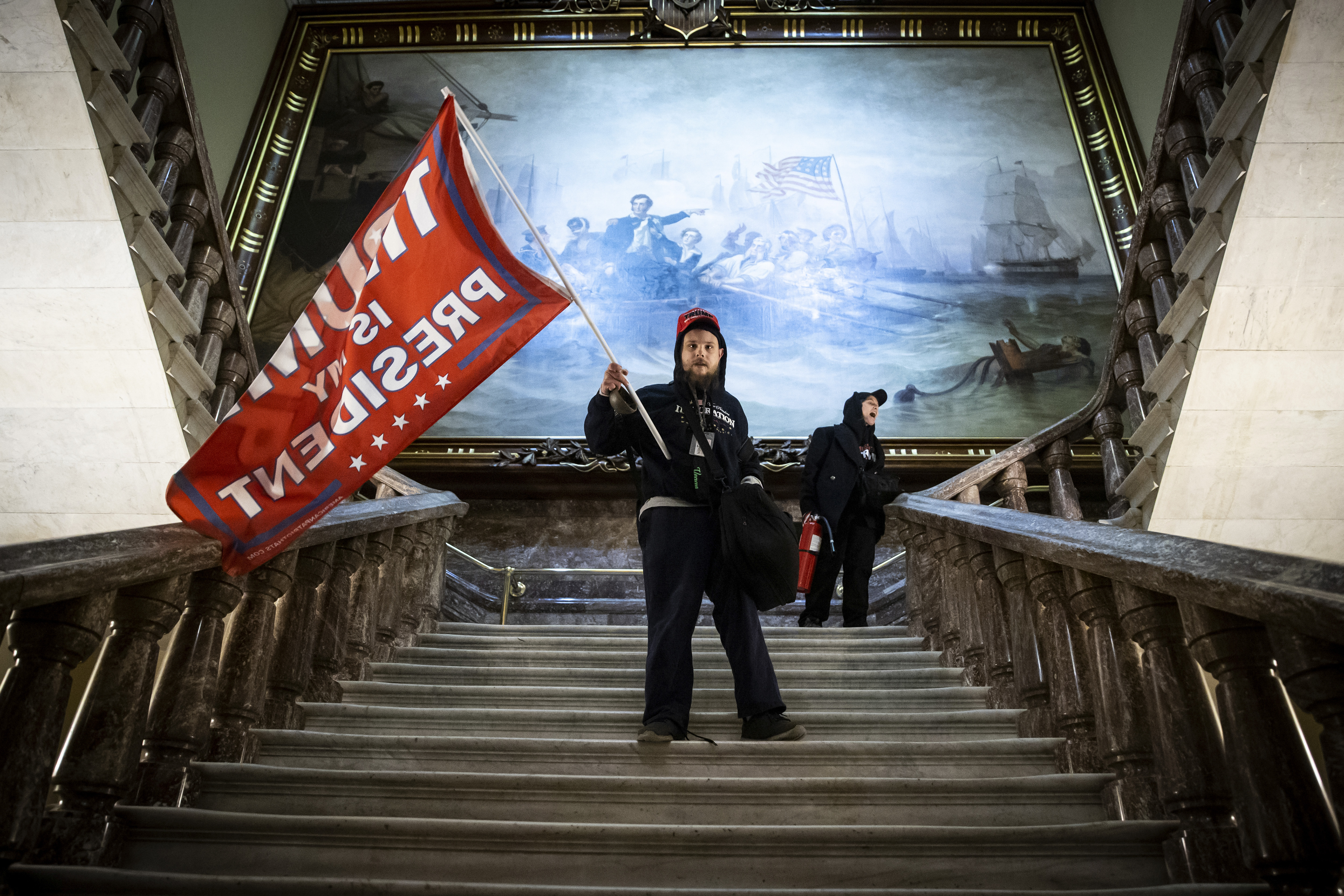
“January 6 – 3.” A supporter of former U.S. President Donald Trump waves a Trump flag while descending a staircase at the U.S. Capitol on January 6, 2021 in Washington, DC. Following a ‘Save America’ rally held by President Donald Trump, a mob of thousands of his supporters descended on the US Capitol and fought their way into the building on 6 January 2021. Members of the mob were called to action by Trump and urged to “fight like hell” after months of disinformation disputing the results of the 2020 presidential election. © Win McNamee, United States of America, Finalist, Professional, Documentary Projects, 2022 Sony World Photography Awards

“January 6 – 9.” Jacob Chansley, also known as the Qanon shaman, cries “Freedom” inside the U.S. Senate chamber after members of a mob supporting former U.S. President Donald Trump battled their way into the U.S. Capitol on January 6, 2021 in Washington, DC. © Win McNamee, United States of America, Finalist, Professional, Documentary Projects, 2022 Sony World Photography Awards
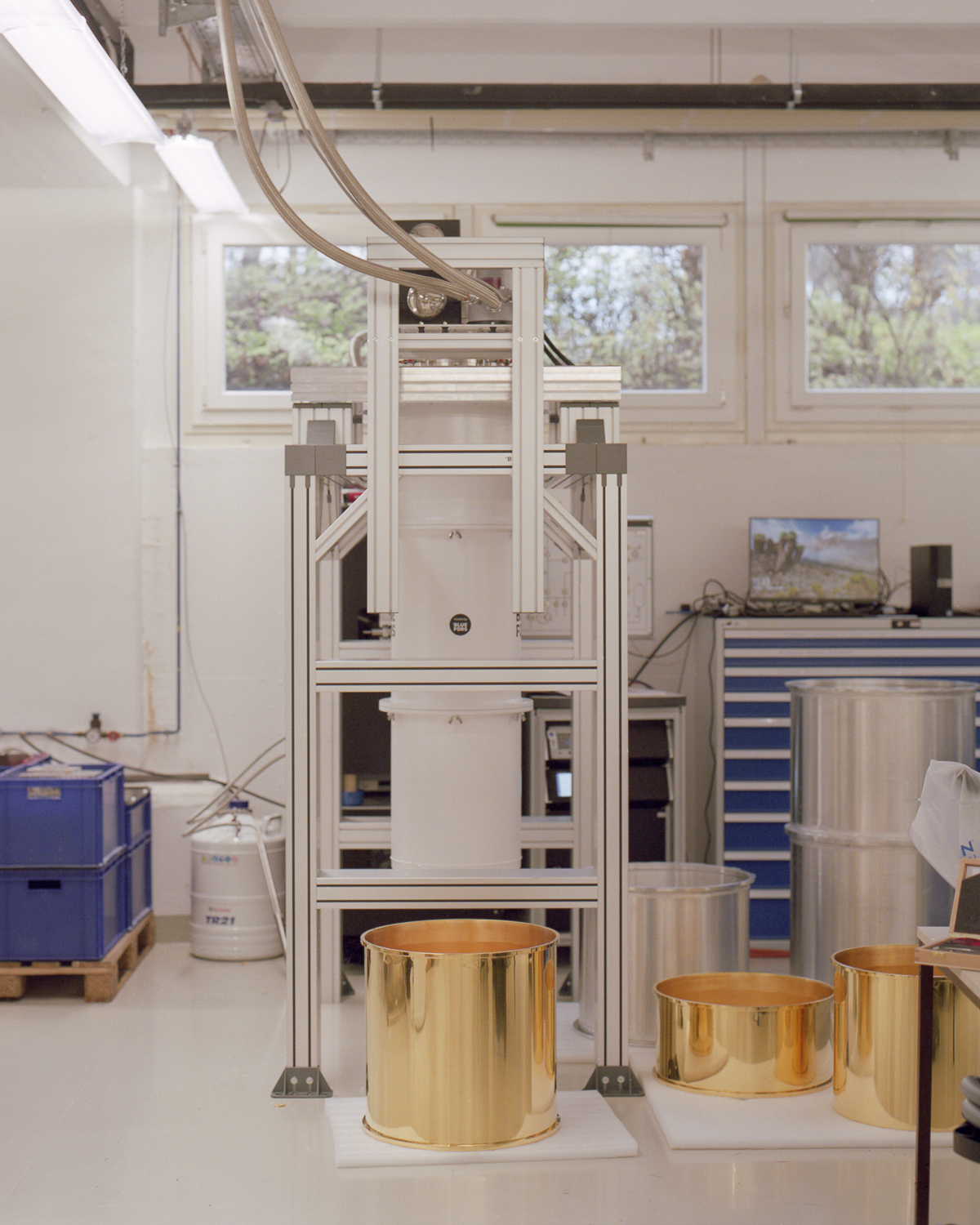
“O.M. 3.” A smaller casing for a smaller model of the quantum computers at FZ Jülich. Just as Prometheus bestowed fire upon humanity, knowledge grows with every achievement scientists bring forth. As titans of the new age, they wield wisdom and power. With rapid developments in quantum computing, various implications for the future arise. Among those are benefits and uncertainties. However, these are only known to a select few. Therefore, alienation thrives between those who seek answers and the individuals that fail to comprehend their questions. Our world continues to be driven to a state in which science blurs the boundaries of reality. This photographic series explores the developments and implications of quantum computing. By using a selection of staged,documentary and still life pictures it exposes various intertwining narratives of science, simulation and hidden power structures. © Moses Omeogo, Germany, Shortlist, Professional, Documentary Projects, 2022 Sony World Photography Awards

“O.M. 7.” A scientist for quantum computer research working at the FZ Jülich (Forschungszentrum Jülich). Europe’s largest research facility with 6000 employees. © Moses Omeogo, Germany, Shortlist, Professional, Documentary Projects, 2022 Sony World Photography Awards
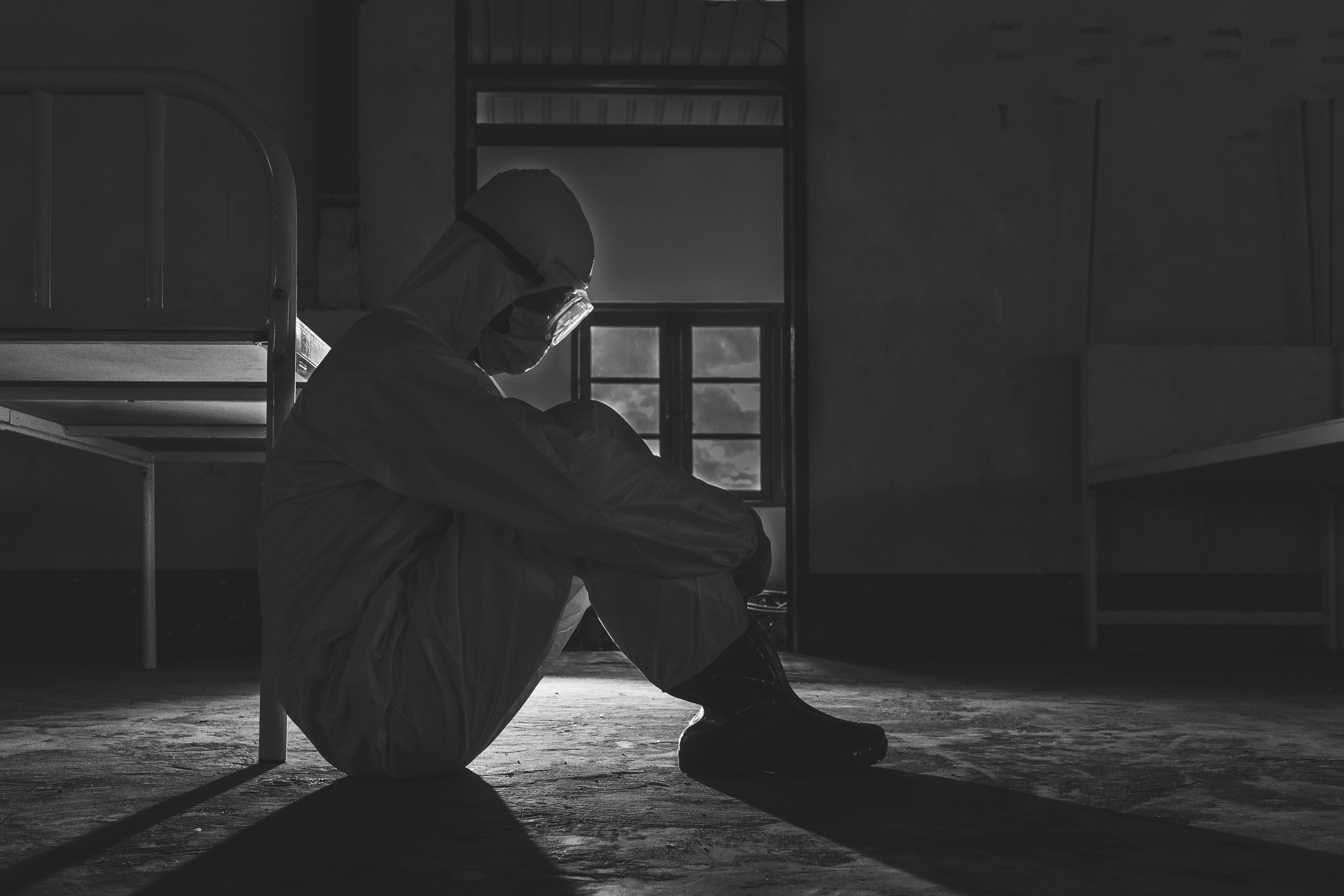
“Life Of Volunteer 6.” He is a volunteer in a Covid-19 rescue unit. He wears a PPE suite throughout the day while undertaking his duties. His philanthropy includes spraying biocide in public places, taking contact patients to hospitals and wrapping dead bodies in winding sheets. He transfers cadavers from hospitals, or homes, to the cemetery with other volunteers. This work is stressful and demanding. He prays to see the end of this pandemic as soon as possible. But for now, his work isn’t finished. The volunteers hold funerals in accordance with each religion. They take care of themselves by spraying biocide on each other. Now, all of the volunteers from around the world are busy and tired. They are truly altruistic people, and this essay is to express my respect and pride. © Kyaw Zay Yar Lin, Myanmar, Shortlist, Professional, Documentary Projects, 2022 Sony World Photography Awards
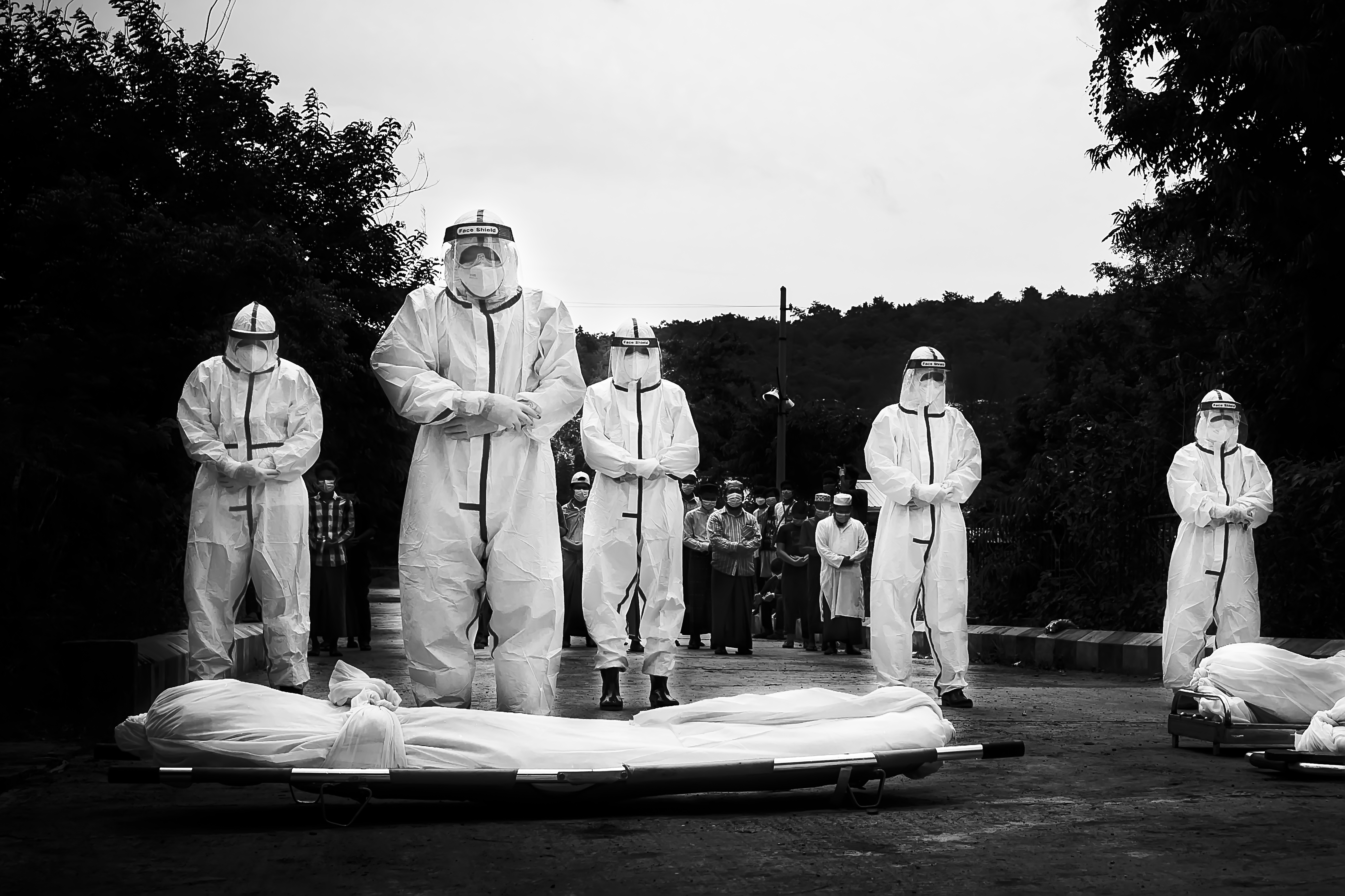
“Life Of Volunteer 8.” © Kyaw Zay Yar Lin, Myanmar, Shortlist, Professional, Documentary Projects, 2022 Sony World Photography Awards

“WPP 3.” Ever Sosa, an Honduran National, kisses his daugther a day before of his attemp of cross from Guatemala towards Mexico across the Suchiate River. Through its policy of denying asylum using the Migrant Protection Protocol and Title 4, the United States has left thousands of people waiting for asylum hearings in dangerous Mexican border cities. Mexico acts as a co-enforcer, militarising its border to detain migrants – building a physical, administrative and psychological barrier shutting out migrants and asylum seekers from all parts of the world. Today, more than ever, the politics of the borders negate the desperate plight of these migrants. They find themselves trapped in a bureaucratic limbo increasingly neglectful of their human rights. © Alejandro Cegarra, Venezuela (Bolivarian Republic of), Shortlist, Professional, Documentary Projects, 2022 Sony World Photography Awards
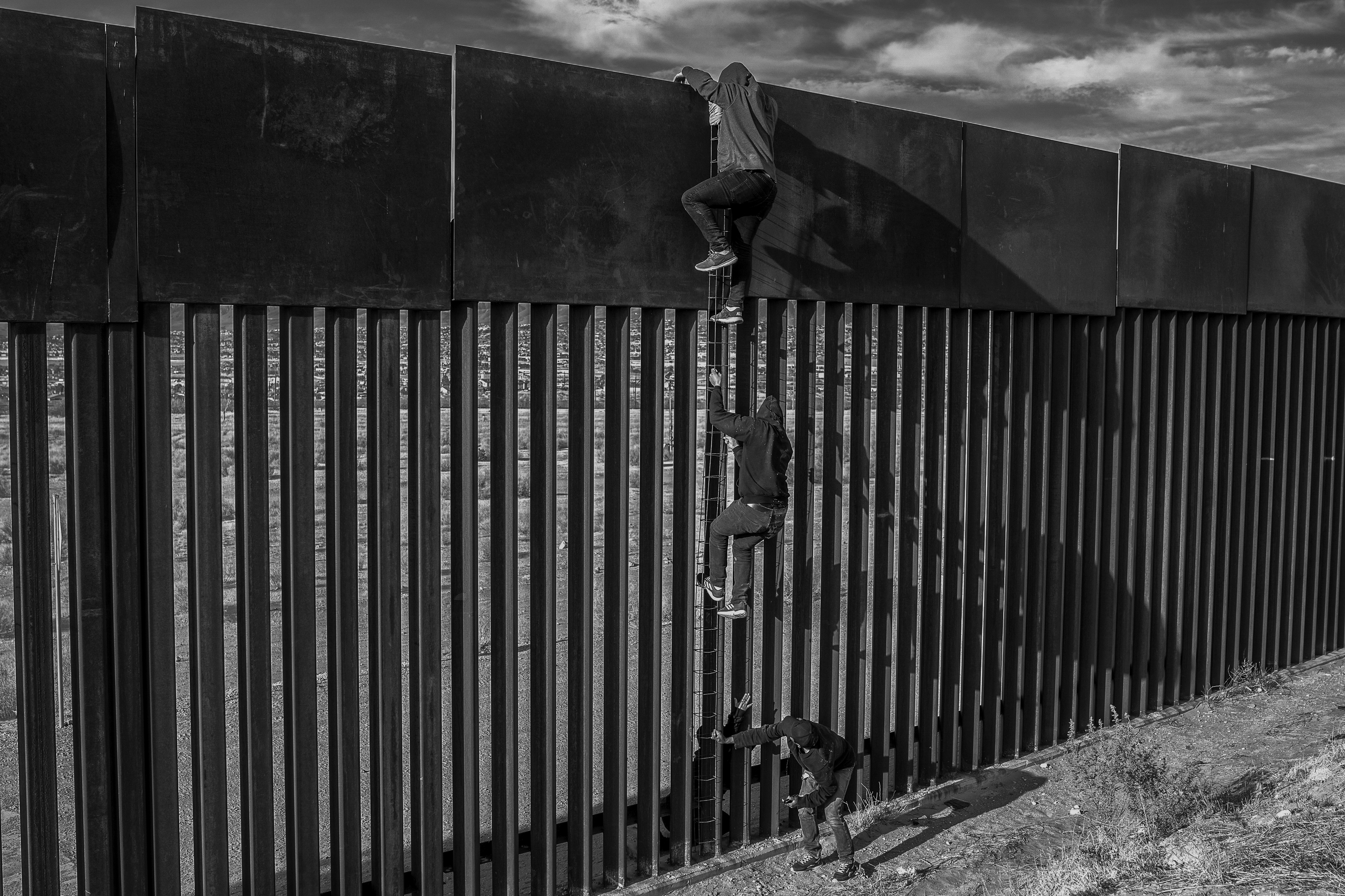
“WPP 10.” Migrants using a homemade ladder are helped by a Coyote to climb the wall that separates Mexico from the United States in Ciudad Juárez. Through its policy of denying asylum using the Migrant Protection Protocol and Title 4, the United States has left thousands of people waiting for asylum hearings in dangerous Mexican border cities. Mexico acts as a co-enforcer, militarising its border to detain migrants – building a physical, administrative and psychological barrier shutting out migrants and asylum seekers from all parts of the world. Today, more than ever, the politics of the borders negate the desperate plight of these migrants. They find themselves trapped in a bureaucratic limbo increasingly neglectful of their human rights.
Copyright: © Alejandro Cegarra, Venezuela (Bolivarian Republic of), Shortlist, Professional, Documentary Projects, 2022 Sony World Photography Awards
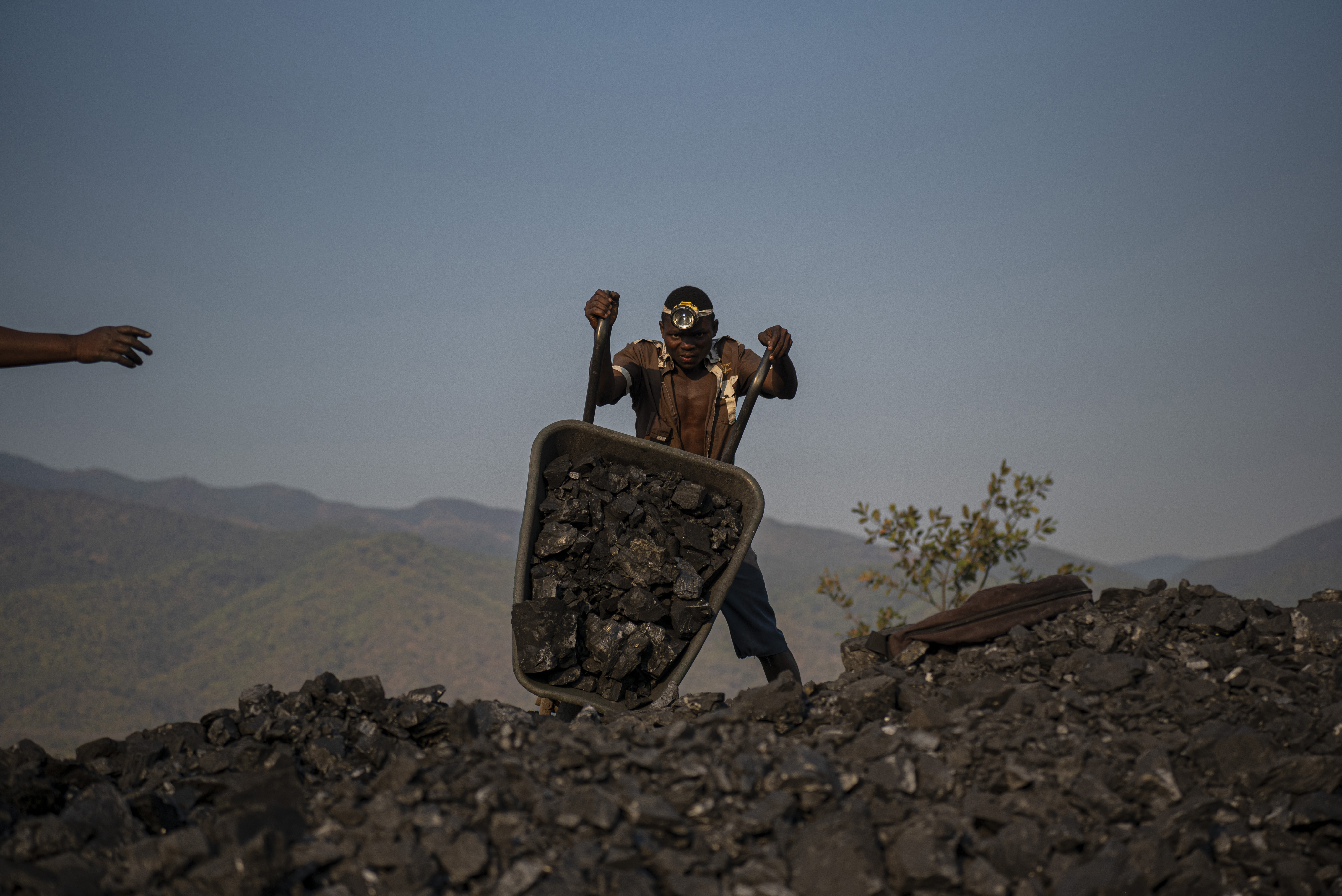
“Konk 3.” Outside the mine, coal is being stored until trucks collect it. In the Karonga district of Malawi, work in the mines is a matter of life and death. Every night, Pililan Mzuma prays to survive the next day. The miners work hard over long days for bad salaries, sometimes waiting months for the money. Without necessary protective gear the conditions are dangerous for the workers. Gresswell Kayange was in the mine in 2019 when big stones fell over him. He was paralysed and is still waiting for compensation. When the political leaders of the world sat down in Glasgow to “phase out” coal, Layson Ngwira and his colleagues kept working calmly in Karonga. © Havard Bjelland, Norway, Shortlist, Professional, Documentary Projects, 2022 Sony World Photography Awards
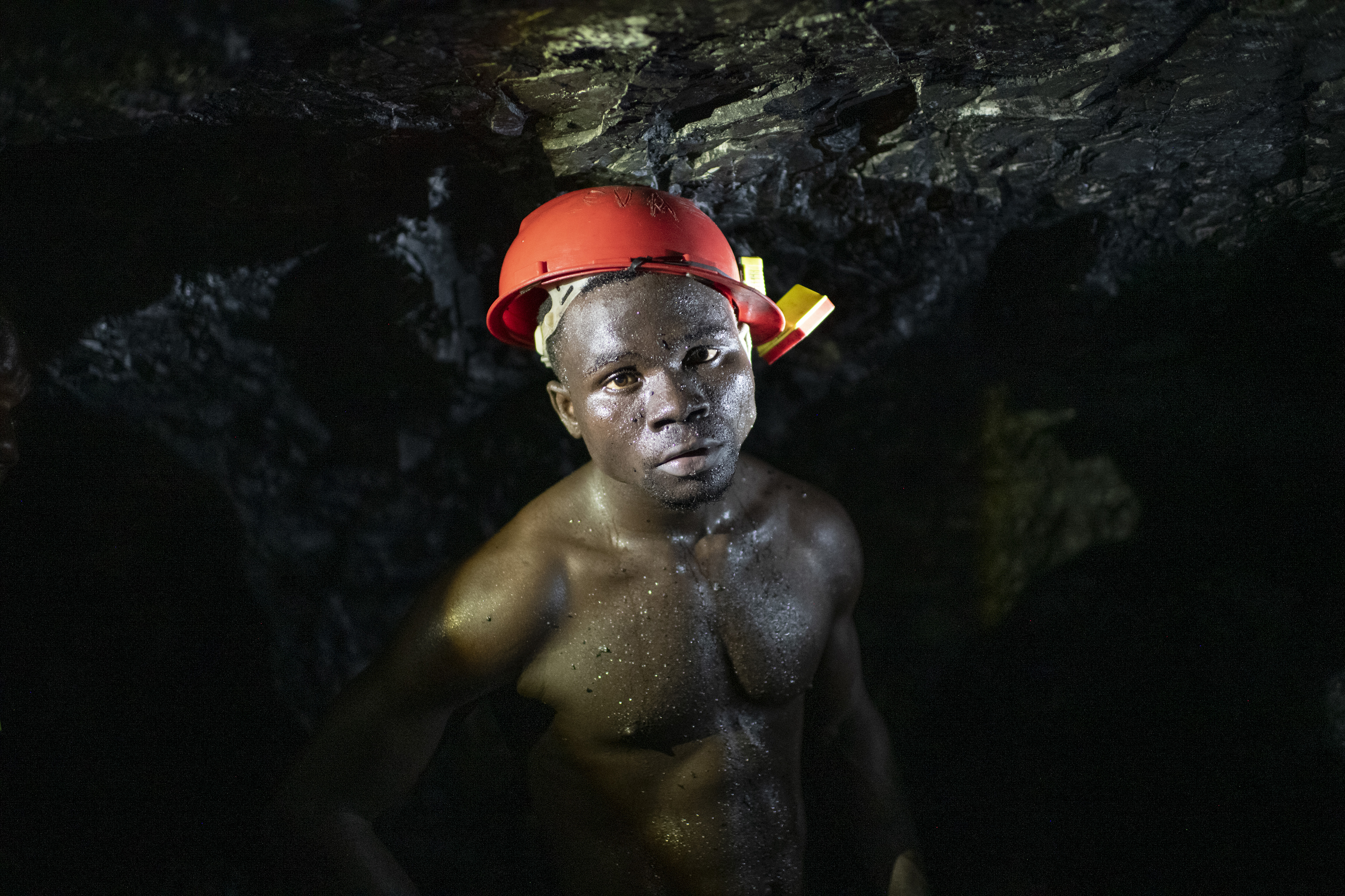
“Konk 7.” “I am tired all the time. I am not being treated as a human being. All I want is to give my children a better future. This is what I am risking my life for.” © Havard Bjelland, Norway, Shortlist, Professional, Documentary Projects, 2022 Sony World Photography Awards
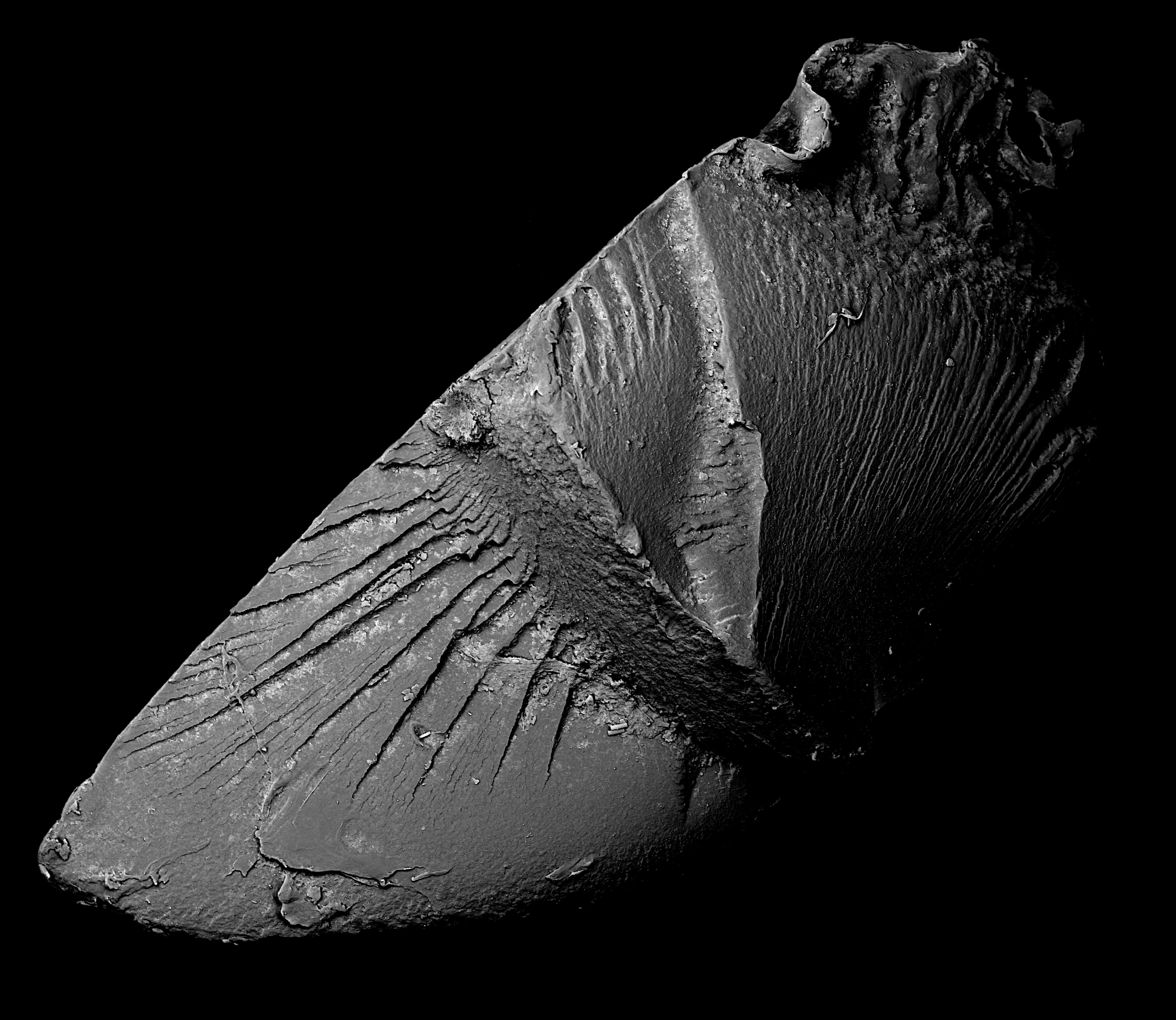
“#8/N.” Photos of microplastics – tiny plastic particles originating from manufactured products and are prevalent in seawater. They are considered pollutants and the amount of microplastics found on the ocean floor worldwide is estimated to be 14 million tonnes. Some microplastics can be detected in sea salt. Each particle has its specific origin and had its own value when it was part of a product. However, as they have been anonymised, we cannot know about the past identities and histories of each microplastic particle. Through this work, as viewers engage with them in their current form, new stories begin to emerge. © Kikoh Matsuura + Kazuki Ide, Japan, Shortlist, Professional, Environment, 2022 Sony World Photography Awards

“#10/N.” © Kikoh Matsuura + Kazuki Ide, Japan, Shortlist, Professional, Environment, 2022 Sony World Photography Awards
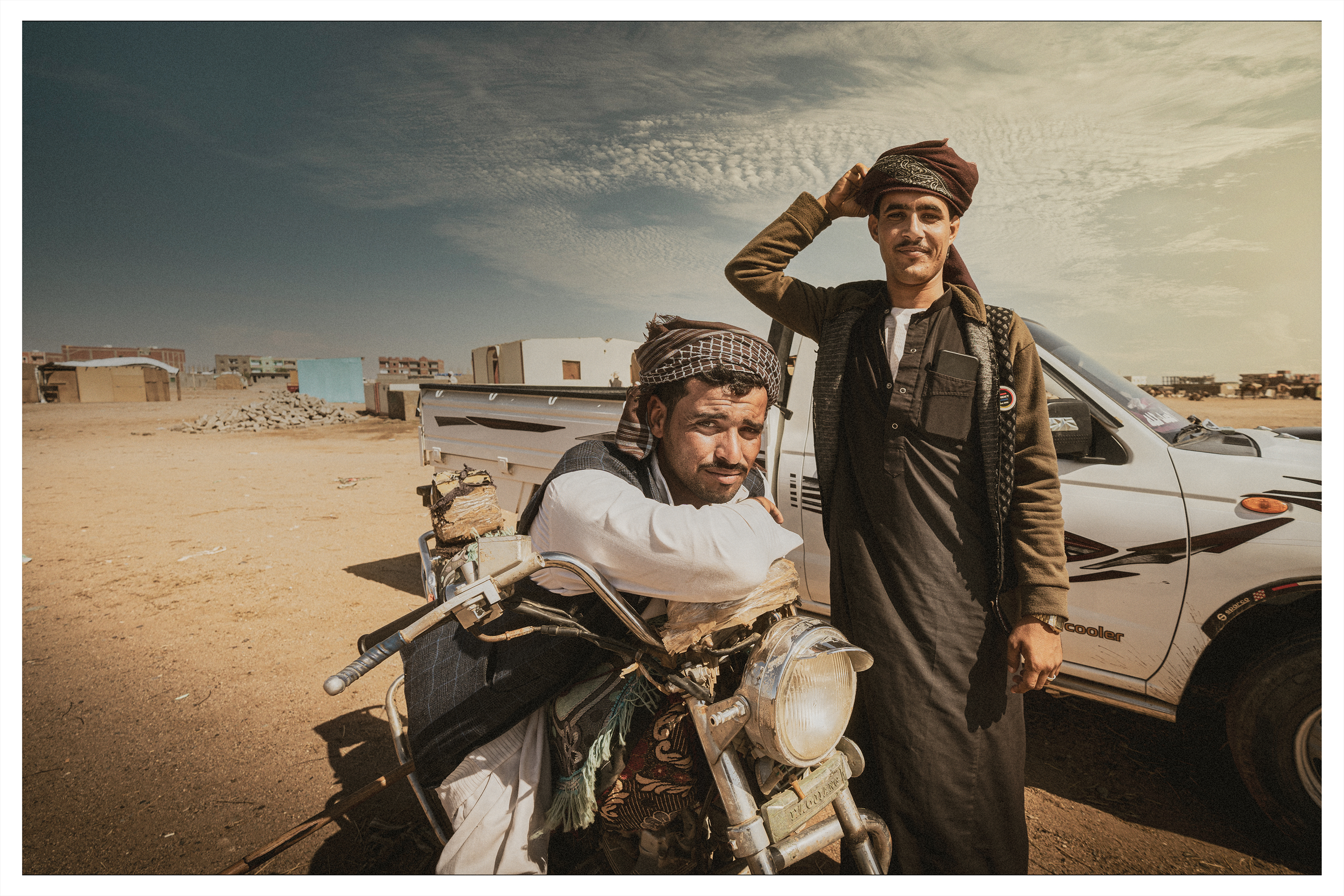
“Rashayda.” The Rashayda ethnic minority holds a monopoly on the trading of dromedaries across the Sudanese border, which they can cross thanks to their status as nomads. The transport of animals within the Egyptian borders is managed by the Beja tribes. There is a slim triangle of land along the perfectly horizontal line that separates Egypt from Sudan, which has always been claimed by both countries. It is the Halayeb-Shalateen triangle, currently under Egyptian rule. Starting from Sudan’s independence in 1956, border relations with Egypt have been characterised more by reciprocal suspicion than by peaceful exchanges. Shalateen is the main outpost of the territory and it is also the most important dromedary market of Egypt, managed by nomadic tribes of Arabic and Nubian origins, who have always inhabited those lands. They are the ones who are paying the highest price for the conflict. For many years and despite many promises, they still don’t have citizenship. They are stateless, paperless and worried that if they move they will be arrested. Based on UNHCR data about 10 million people in the world today are stateless. This includes children in certain countries who, without the proper documentation, don’t have access to public healthcare including vaccinations. © Andrea Bettancini, Italy, Shortlist, Professional, Documentary Projects, 2022 Sony World Photography Awards
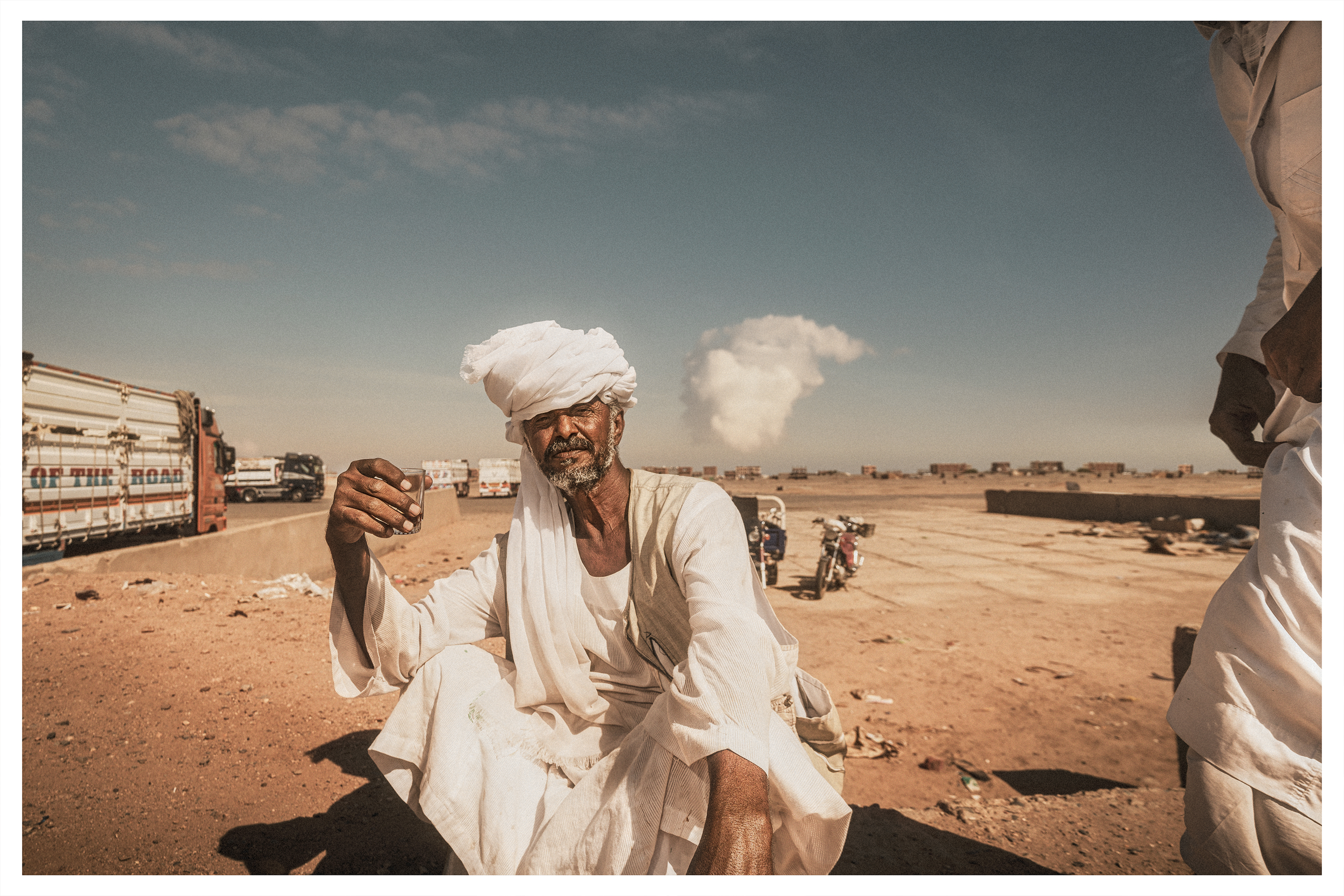
“The Tea Break.” Taken in November, 2021, in Shalateen, Egypt. © Andrea Bettancini, Italy, Shortlist, Professional, Documentary Projects, 2022 Sony World Photography Awards

“Cut down for Charcoal, Swallowed by the Sea 01.” The view from Queen Anne’s Point at Cape Coast, Ghana. All of these communities are at risk of disappearing due to rising sea levels, if nothing more is done about global warming. As long as carbon emissions continue to rise, and rainforests are reduced to irrelevance, there is nothing that will stop the immense power of an increasingly heated and acidic sea. Every morning Hannah Obodai sweeps sand from the floor of what used to be her house. A storm in September flooded the coastal fishing village of Adina, Ghana – wiping out entire houses with tremendous power. In less than 50 years, Ghana’s primary rainforest has been reduced by 90%. The September storm was one of the latest examples of how global warming is accelerating and changing the face of the Earth. And how entire communities living in coastal areas are at risk from rising sea levels, resulting in migration. As long as carbon emissions continue to rise and rainforests are being reduced to irrelevance, there is nothing that will stop the immense power of an increasingly heated and acidic sea. © Lieven Engelen, Belgium, Shortlist, Professional, Environment, 2022 Sony World Photography Awards
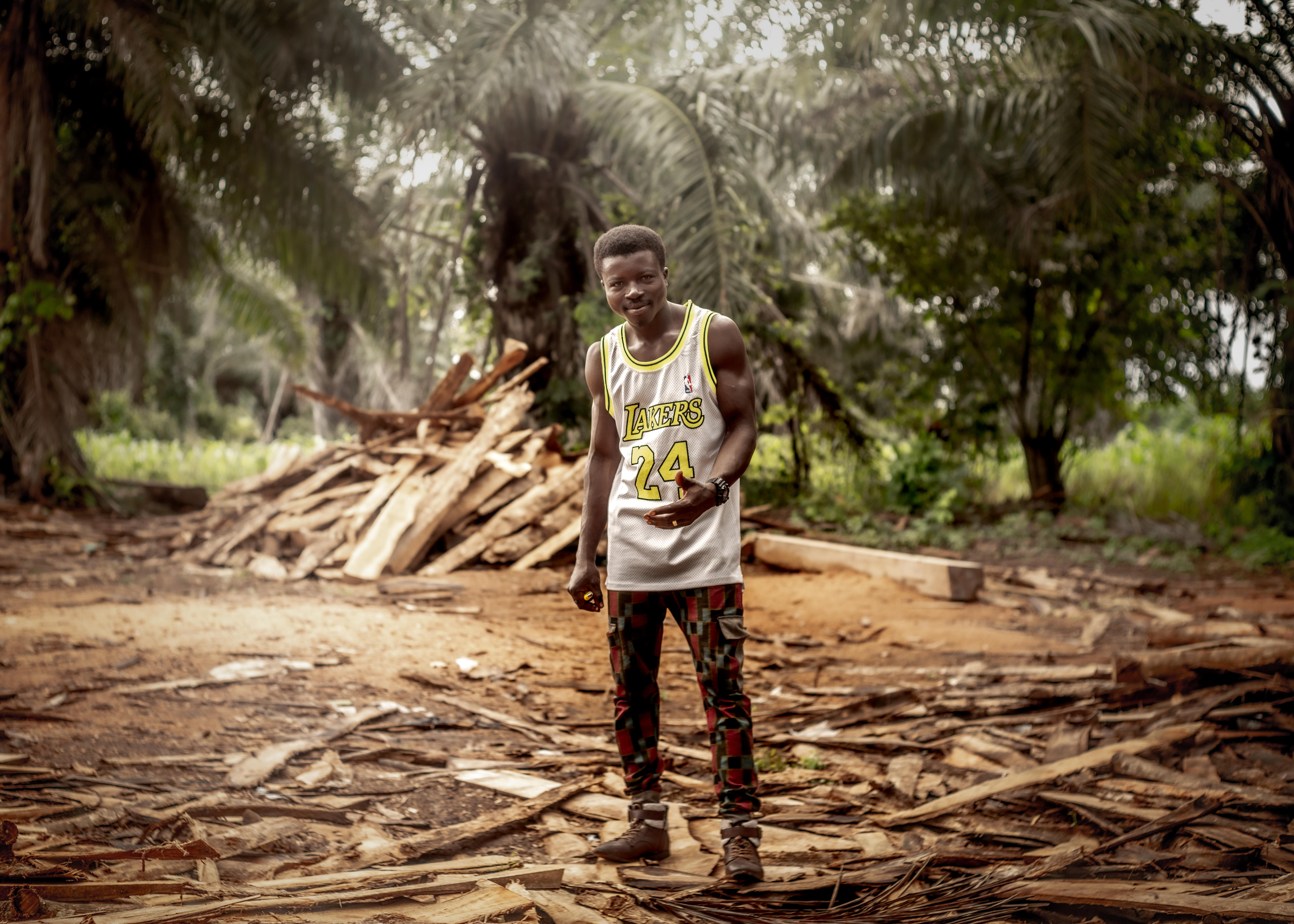
“Cut down for Charcoal, Swallowed by the Sea 07.” Yakubu Issa (28), caretaker of a logging site in the Bono East region, Northern Ghana. The wood in the background is leftovers from hardwood and will be turned into charcoal. Yakubu wouldn’t mind doing another job instead of the work that he is doing right now. But as there is nothing else for him to do, and it is the only way to support his family, he sees no option but to continue. © Lieven Engelen, Belgium, Shortlist, Professional, Environment, 2022 Sony World Photography Awards

“Stacks at a Gasoline Refinery Processing Crude Oil.” This facility emits a large volume of the usual panoply of toxics: Lead mercury, benzene, chromium, sulfuric acid, and dioxin. It ranks 233 on the list of greenhouse gas producers which still puts it high on the list of the causes of the climate crisis. For 20 years I have made hauntingly beautiful images of the industrial scars of our economy and paired them with the relevant scientific data. These tell the story of how our constant desire for more of everything and consumer decisions impacts nature and are key causes of the Climate Crisis and Extinction Crisis. The locations around the world are found through extensive research. When I get there I hire a small plane – which allows me to fly over any barriers preventing access to these sites – and create images in which these frightening realities can be shown as abstract patterns, becoming art instead of document. The pictures are made with the highest resolution equipment, giving them an abundance of detail and colour. © J Henry Fair, United States of America, Shortlist, Professional, Environment, 2022 Sony World Photography Awards

“A Refinery Waste Pit Recently Idled for Conversion to Renewable Fuels Manufacturing.” This refinery refined oil into gasoline and other petroleum based products. It has been idled since April 2020 to be converted to a renewable fuels manufacturing facility. These toxic legacies will remain, and probably be buried. © J Henry Fair, United States of America, Shortlist, Professional, Environment, 2022 Sony World Photography Awards DM/ML



















 Become an Insider
Become an Insider
Comments - Please login in order to comment.